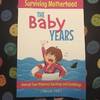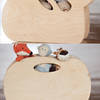How to Stay Safe in the Heat: Prevent Heat Stroke and Heat Exhaustion in the Hot Summer Sun



It's the middle of Summer. It's hot out there, folks. Please be careful if you're outside, especially if it's as hot where you are as it is here in South Texas!
Heat Safety
North American summers are hot; most summers see heat waves in one or more parts of the United States. Heat is one of the leading weather-related killers in the United States, resulting in hundreds of fatalities each year and even more heat-related illnesses.
Each National Weather Service Forecast Office issues some or all of the following heat-related products as conditions warrant. NWS local offices often collaborate with local partners to determine when an alert should be issued for a local area. For instance, residents of Florida are much more prepared for 90°F+ weather than residents in Alaska.
Excessive Heat Warning—Take Action! An Excessive Heat Warning is issued within 12 hours of the onset of extremely dangerous heat conditions. The general rule of thumb for this Warning is when the maximum heat index temperature is expected to be 105° or higher for at least 2 days and night time air temperatures will not drop below 75°; however, these criteria vary across the country, especially for areas not used to extreme heat conditions. If you don't take precautions immediately when conditions are extreme, you become seriously illness or even die.
Excessive Heat Watches—Be Prepared! Heat watches are issued when conditions are favorable for an excessive heat event in the next 24 to 72 hours. A Watch is used when the risk of a heat wave has increased but its occurrence and timing is still uncertain.
Heat Advisory—Take Action! A Heat Advisory is issued within 12 hours of the onset of extremely dangerous heat conditions. The general rule of thumb for this Advisory is when the maximum heat index temperature is expected to be 100° or higher for at least 2 days, and night time air temperatures will not drop below 75°; however, these criteria vary across the country, especially for areas that are not used to dangerous heat conditions. Take precautions to avoid heat illness. If you don't take precautions, you could become seriously illness or even die.
Excessive Heat Outlooks are issued when the potential exists for an excessive heat event in the next 3-7 days. An Outlook provides information to those who need considerable lead-time to prepare for the event.
The Heat Index is a measure of how hot it really feels when relative humidity is factored in with the actual air temperature. To find the Heat Index temperature, look at the Heat Index Chart above or check our Heat Index Calculator. As an example, if the air temperature is 96°F and the relative humidity is 65%, the heat index--how hot it feels--is 121°F. The red area without numbers indicates extreme danger. The National Weather Service will initiate alert procedures when the Heat Index is expected to exceed 105°-110°F (depending on local climate) for at least 2 consecutive days.
The NWS also offers a Heat Index chart for area with high heat but low relative humidity. Since heat index values were devised for shady, light wind conditions, exposure to full sunshine can increase heat index values by up to 15°F. Also, strong winds, particularly with very hot, dry air, can be extremely hazardous.
During a Heat Wave:
Stay Informed: Monitor local radio and television (including NOAA Weather Radio), internet and social media for information and updates.
How to Respond to Excessive Heat Events
Slow down: reduce, eliminate or reschedule strenuous activities until the coolest time of the day. Children, seniors and anyone with health problems should stay in the coolest available place, not necessarily indoors.
Dress for summer. Wear lightweight, loose fitting, light-colored clothing to reflect heat and sunlight.
Eat light, cool, easy-to-digest foods such as fruit or salads. If you pack food, put it in a cooler or carry an ice pack. Don't leave it sitting in the sun. Meats and dairy products can spoil quickly in hot weather.
Drink plenty of water (not very cold), non-alcoholic and decaffeinated fluids, even if you don't feel thirsty. If you on a fluid restrictive diet or have a problem with fluid retention, consult a physician before increasing consumption of fluids.
Use air conditioners or spend time in air-conditioned locations such as malls and libraries.
Use portable electric fans to exhaust hot air from rooms or draw in cooler air.
Do not direct the flow of portable electric fans toward yourself when room temperature is hotter than 90°F. The dry blowing air will dehydrate you faster, endangering your health.
Minimize direct exposure to the sun. Sunburn reduces your body's ability to dissipate heat.
Take a cool bath or shower.
Do not take salt tablets unless specified by a physician.
Check on older, sick, or frail people who may need help responding to the heat. Each year, dozens of children and untold numbers of pets left in parked vehicles die from hyperthermia. Keep your children, disabled adults, and pets safe during tumultuous heat waves.
Don't leave valuable electronic equipment, such as cell phones and gps units, sitting in hot cars.
Make sure rooms are well vented if you are using volatile chemicals.
For more heat health tips, go to the Centers for Disease Control and Prevention
Safety Tips for Parents
Even on mild days in the 70s, studies have shown that the temperature inside a parked vehicle can rapidly rise to a dangerous level for children, pets and even adults. Leaving the windows slightly open does not significantly decrease the heating rate. The effects are more severe on children because their bodies warm at a faster rate than adults. A dark dashboard or carseat can quickly reach temperatures in the range of 180°F to over 200°F. These objects heat the adjacent air by conduction and convection and also give off long wave radiation, which then heats the air trapped inside a vehicle. Follow these tips to ensure your child's safety.
Touch a child's safety seat and safety belt before using it to ensure it's not too hot before securing a child
Never leave a child unattended in a vehicle, even with the windows down, even for just a minute
Teach children not to play in, on, or around cars. They could accidentally trap themselves in a hot vehicle.
Always lock car doors and trunks--even at home--and keep keys out of children's reach.
Always make sure children have left the car when you reach your destination. Don't leave sleeping infants in the car ever.
Heat Safety for Outdoor Workers
Outdoor workers can be at a higher risk to the effects of excessive heat. See Occupational Safety and Health Administration (OSHA) resources and recommended practices when working under hot conditions.
Drink water often
Rest and cool down in the shade during breaks
Gradually increase workload and allow more frequent breaks for new workers or workers who have been away for a week or more
Know symptoms, prevention, and emergency response to prevent heat-related illness and death
Check weather forecasts ahead of time to be better prepared
Common Heat Related Illnesses:
During extremely hot and humid weather, your body's ability to cool itself is challenged. When the body heats too rapidly to cool itself properly, or when too much fluid or salt is lost through dehydration or sweating, body temperature rises and you or someone you care about may experience a heat-related illness. It is important to know the symptoms of excessive heat exposure and the appropriate responses. The Centers for Disease Control and Prevention provides a list of warning signs and symptoms of heat illness, and recommended first aid steps. Some of these symptoms and steps are listed below.
Heat Cramps
Heat cramps may be the first sign of heat-related illness, and may lead to heat exhaustion or stroke.
Symptoms:
Painful muscle cramps and spasms usually in legs and abdomen
Heavy sweating
First Aid:
Apply firm pressure on cramping muscles or gently massage to relieve spasm.
Give sips of water unless the person complains of nausea, then stop giving water
Heat Exhaustion
Symptoms:
Heavy sweating
Weakness
Cool, pale, clammy skin
Fast, weak pulse
Possible muscle cramps
Dizziness
Nausea or vomiting
Fainting
First Aid:
Move person to a cooler environment
Lay person down and loosen clothing
Apply cool, wet cloths to as much of the body as possible
Fan or move victim to air conditioned room
Offer sips of water
If person vomits more than once, seek immediate medical attention.
Heat Stroke
Symptoms:
Altered mental state
One or more of the following symptons: throbbing headache, confusion, nausea, dizziness, shallow breathing
Body temperature above 103°F
Hot, red, dry or moist skin
Rapid and strong pulse
Faints, loses consciousness
First Aid:
Heat stroke is a severe medical emergency. Call 911 or get the victim to a hospital immediately. Delay can be fatal.
Move the victim to a cooler, preferably air-conditioned, environment.
Reduce body temperature with cool cloths or bath.
Use fan if heat index temperatures are below the high 90s. A fan can make you hotter at higher temperatures.
Do NOT give fluids.
How do you stay cool in the summer?




















Comments